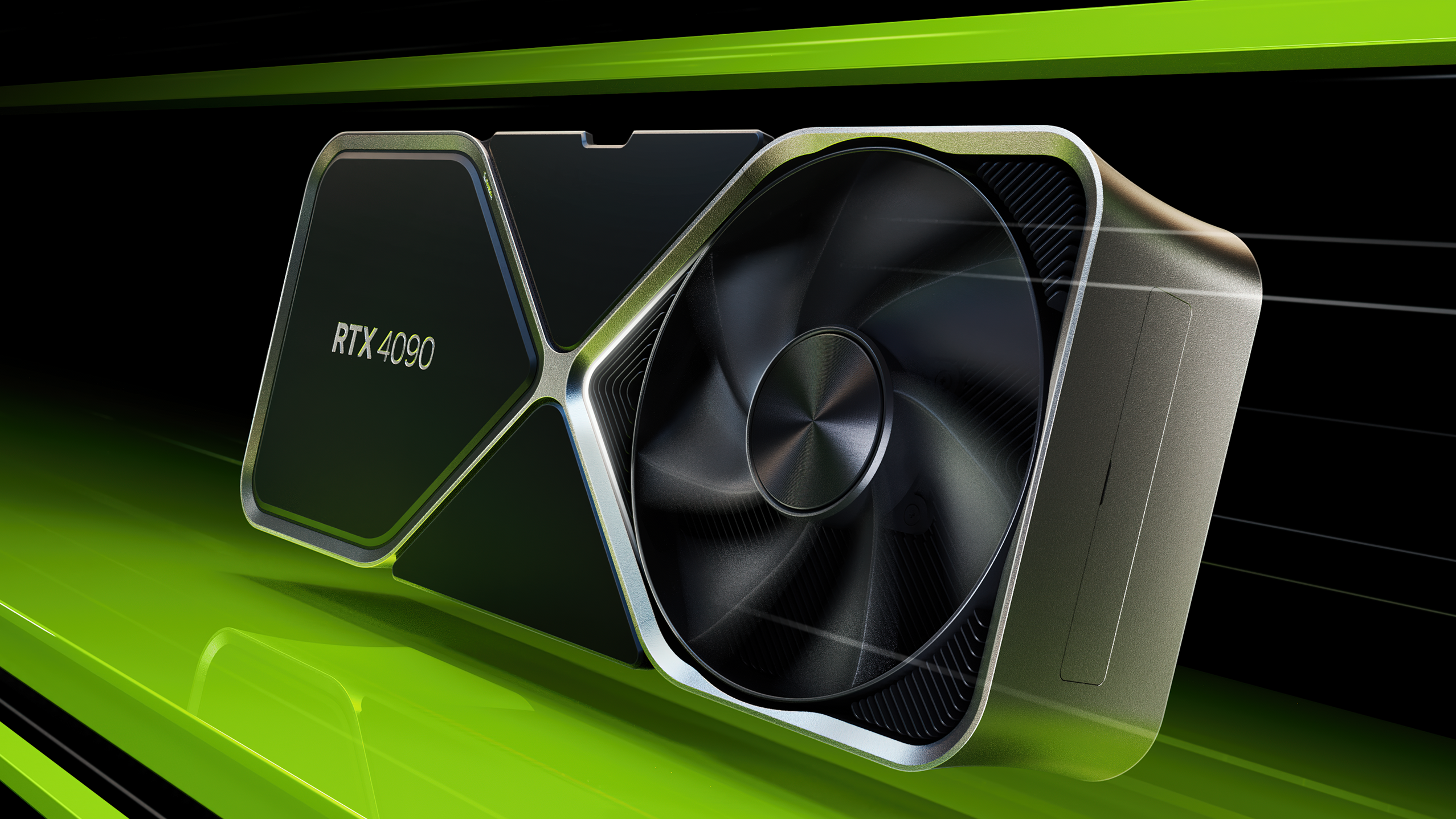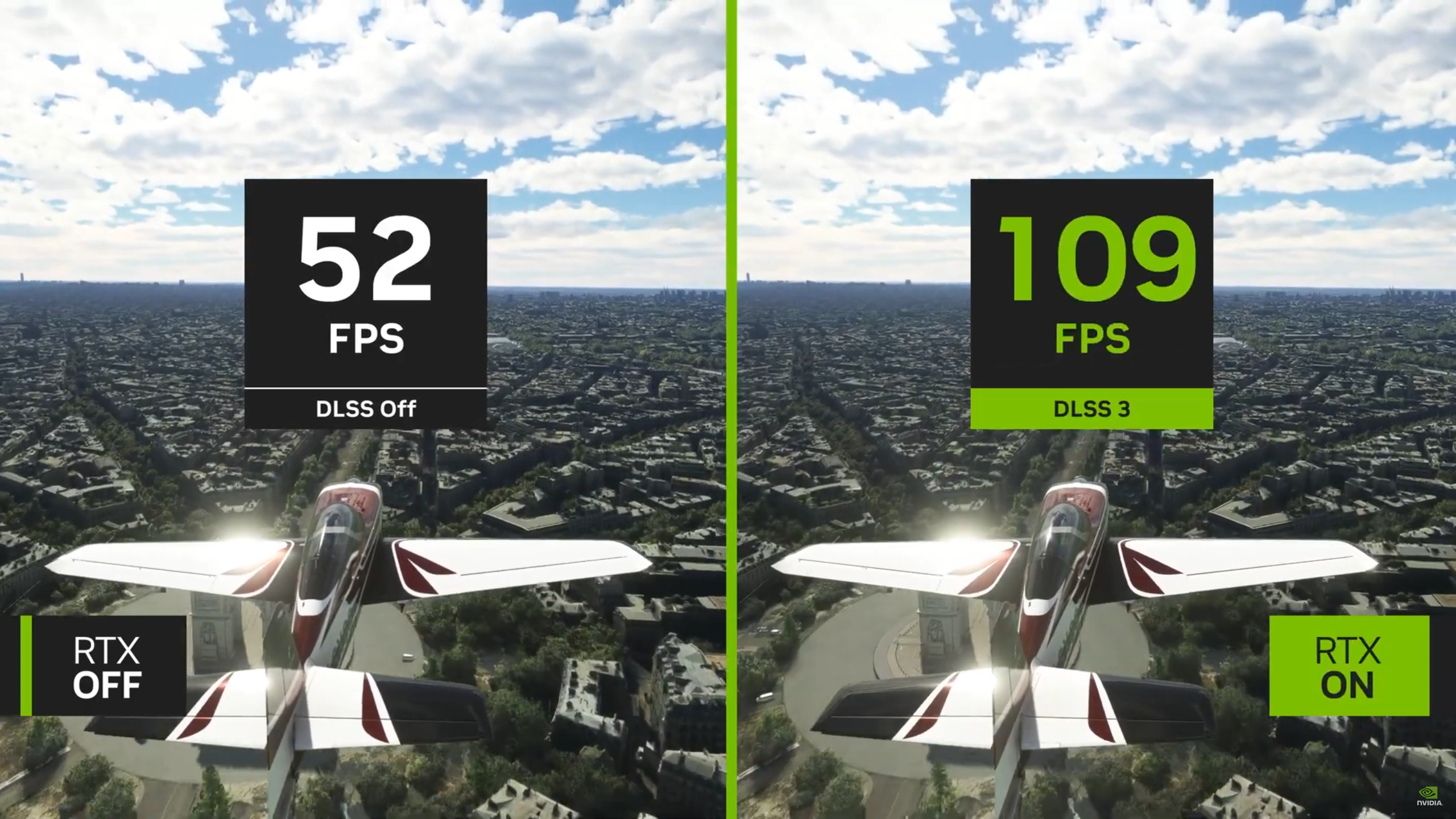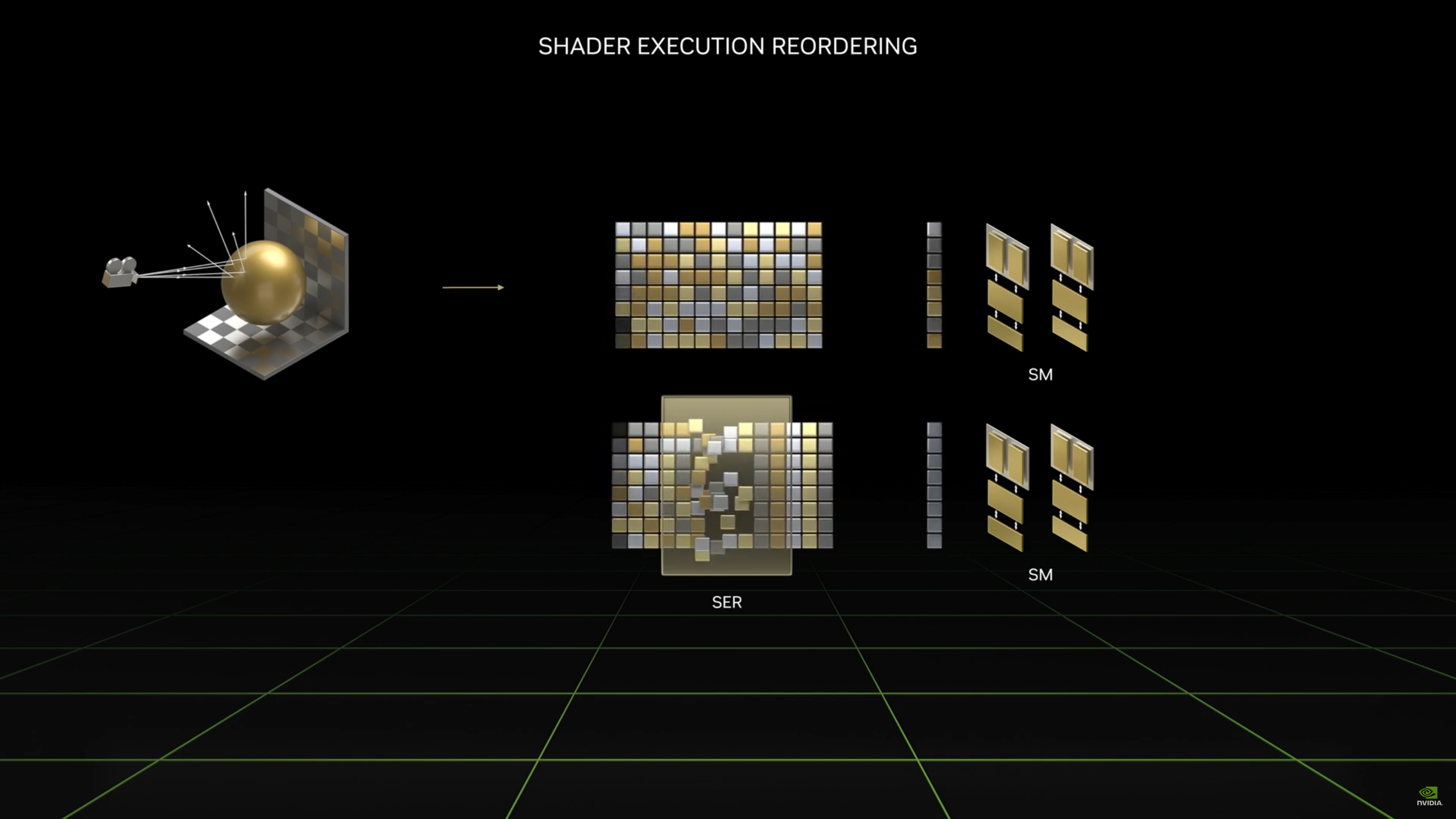How odd to “unlaunch” a GPU so soon prior to release, though since Nvidia are reportedly paying rebranding costs to board partners, we could still see that 12GB card release under a different name. In the meantime, here’s where you can read all about Nvidia’s latest graphics card generation, from details on its ‘Ada Lovelace’ architecture to intriguing new features like DLSS 3. Plus all the basic price and release date deets, if you’re just after those. It will also be worth looking out for AMD’s next-gen RDNA 3/Radeon RX 7000 series GPUs, which are set for a big reveal event on November 3rd. Whereas the RTX 4080 and RTX 4090 are mainly about huge power (at huge expense), the RDNA 3 generation will apparently focus on efficiency improvements. Which does sound a bit dull, but if the price is right, they’ll still have a good chance of challenging Nvidia in the best graphics card stakes.
Nvidia GeForce RTX 40 series prices
Might as well get this out of the way quickly, as the RTX 40 series pricing is (thus far) kinda wince-worthy:
RTX 4080 12GB: £949 / $899 RTX 4080 16GB: £1269 / $1199 RTX 4090: £1679 / $1599
…Yeah. For comparison, the RTX 3080 launched at £649 / $699, while the RTX 3090 cost $1400 / $1500, and since these are Nvidia’s starting prices it’s likely that most board partner versions will set you back even more. Nvidia-made Founders Edition models of the RTX 4090 and the sole surviving RTX 4080 will be your best chance of finding these GPUs at the prices listed above, but expect to pay anywhere between £50 and £200 more for a custom partner model. Speaking of, Asus, Colorful, Gainward, Galaxy, Gigabyte, Inno3D, MSI, Palit, PNY, and Zotac are all producing their own RTX 40 series models. Not EVGA, mind, who are quitting the graphics card business entirely, citing uncooperative practices on Nvidia’s part. Hopefully if the nixxed RTX 4080 12GB reappears in the future, possibly as an RTX 4070 or RTX 4070 Ti, it will be with a more attainable price as well. £949 / $899 would have represented an enormous premium on both the 10GB and 12GB RTX 3080 versions, despite the Ada Lovelace GPU having even less memory bandwidth for some reason.
Nvidia GeForce RTX 40 series release dates
The RTX 4090 is on sale now, having released on October 12th 2022. It appears that despite costing more than an entire series of Antiques Roadshow items, it’s still in high demand, and is currently sold out at major retailers like Ebuyer and Scan. The RTX 4080 16GB, meanwhile, will release on November 16th. The RTX 4080 12GB was going to join it, but is now in graphics cards limbo while Nvidia decide what to do with the already-manufactured stock. The most likely outcome? It gets released later with different branding, though any potential RTX 4070 and/or RTX 4060 cards will be weeks if not months away.
Nvidia GeForce RTX 40 series specs
The RTX 40 series is based on a completely new GPU architecture, Ada Lovelace, and just as with previous generations there are a few different underlying graphics processors in play. This brings us to one reason why the RTX 4080 12GB went down so badly with prospective buyers that Nvidia decided to hold it back: it doesn’t even use the same AD103 processor as the RTX 4080 16GB, instead being given the lower-spec AD104. As you can see from the specs table below, the RTX 4080 12GB would have also had much narrower memory bandwidth than its stablemates, not to mention high-end GPUs from the Ampere generation. All that said, I’ve left the “unlaunched” model in the table for now, as we could yet see the hardware in a future RTX component. It’s not just prices that are creeping up, as the RTX 4090 now has the same quoted power usage and PSU wattage requirement as the mighty RTX 3090 Ti – though conversely, if you already have an RTX 3080 and bought its recommend 750W PSU, you won’t need to upgrade the latter for the RTX 4080. In terms of upgrades, Ada Lovelace does look like a big architectural advance over the RTX 30 series’ Ampere design. The RT and Tensor cores (which enable ray tracing and AI/machine learning tools like DLSS, respectively) have both been redesigned to be faster and more efficient. You also just get more of them than on Ampere, and CUDA core counts – think of these as the basic workhorse cores for everyday game running – are higher across the board. The RTX 40 series won’t take advantage of PCIe 5.0 slots on next-gen motherboards, as Nvidia say PCIe 4.0 can still provide the cards with ample bandwidth. That’s fine – even with the impending launch of the AMD Ryzen 7000 CPUs and chipsets, PCIe 5.0 graphics support on motherboards is several years off becoming the norm. The RTX 4090 and RTX 4080s will work in the PCIe 3.0 slots of older mobos, too.
Nvidia GeForce RTX 40 series features
Faster, more numerous cores are welcome, but if the RTX 40 series does end up being worth the money, it will most likely be thanks to its big feature upgrades. The most interesting of all is DLSS 3. trIf you’re not already familiar, DLSS in its current form (the latest version is 2.4) improves performance in games by rendering each frame at a lower resolution, thereby using less horsepower. It then applies upscaling and custom anti-aliasing – both generated by Nvidia teaching an AI algorithm how to produce the best images – to make each frame look like your monitor’s native resolution. It’s brilliant, most of the time, and DLSS 3 goes a long step further by inserting new, entirely AI-generated frames between each of the ‘real’ rendered frames. The Ada Lovelace architecture also includes a new “Optical Flow Accelerator” that aims to reduce artifacting on objects when the camera is in motion. This is a rare but unsightly weakness of upscalers like DLSS and AMD FSR, and by combining this Optical Flow engine with motion vectors (data from surrounding frames that detail how the image changes between them), DLSS 3 promises to make upscaled games look cleaner and sharper. I’m working on a more in-depth DLSS 3 testing feature, but from what I’ve seen from the RTX 4090, DLSS 3 is a wild success if your only concern is maximising framerates. Even in tough games like Cyberpunk 2077, with maxed-out quality and ray tracing settings, DLSS 3 can double or even triple triple the FPS count of native 4K. Here’s how it works in F1 22 and Microsoft Flight Simulator as well: Ray tracing is also getting an upgrade, specifically in how Ada Lovelace GPUs crunch the numbers on rendering ray traced graphics. I don’t think I can explain this without getting a bit dorky, but bear with me. So, graphics processors work best when they’re performing lots of identical tasks in a row; it’s faster to, say, draw an object with many instances of a repeating texture than if it had fewer, but more varied and unique textures. Kind of like how SSDs are faster when reading data that’s stored sequentially. A big part of why ray tracing slows down game performance so much is that it demands that the GPU perform potentially millions of distinct tasks, enough that developers can’t manually order them in a processor-friendly way. The RTX 40 series, however, can use a technique called Shader Execution Reordering. This allows the GPU itself to arrange these tasks in a nice, neat row, allowing itself to tackle them more efficiently. Nvidia say this can improve overall performance with RT enabled by up to 25% over Ampere, which wouldn’t completely wipe out the FPS tax in most games but would certainly make them run more smoothly. Indeed, I found in my RTX 4090 review that ray tracing imposed a propotionally smaller FPS tax on games than it did on its closest Ampere equivalent, the RTX 3090 Ti. RTX 40 GPUs will also have AV1 encoding capabilities as standard. This won’t make your games run faster, but it’s good news if you’re into livestreaming or creating videos from games footage: the AV1 format beats the trousers off current-gen formats for image quality and data usage. It’s bad news for Intel, though, as AV1 encoding looked like the one real USP of their long-overdue Arc Alchemist graphics cards. So much for that advantage.
What is RTX Remix, and what does it have to do with the RTX 40 series?
The RTX 4090/RTX 4080 launch involved a lot of Nvidia showing off its new RTX Remix app. Perhaps not undeservedly – if it works as intended, RTX Remix could be a very big deal for modding older PC games. The idea is that RTX Remix uses Ada Lovelace’s AI/machine learning features to massively streamline the process of making HD mod packs for aging games. With it, modders can import a game into the app and ‘capture’ assets (like textures, geometry and lighting) with a few clicks. These assets are then auto-converted into the USD (Universal Scene Description) file format, allowing the modder to make changes with RTX Remix’s various tools. These include AI-powered texture tools that can upscale textures by up to 4x, or detect what kind of a material an old texture is supposed to represent – wood, metal, etc. – and automatically give them an appropriate, more detailed roughness or shininess. Ray tracing effects, Nvidia Reflex, and DLSS 3 support can all be applied as well, and by syncing RTX Remix to other apps like Blender, Maya, Photoshop, and Adobe Substance, it’s possible to create whole new models and see them take shape inside the mod in real time. Once complete, RTX Remix can export everything as a mod pack, which just needs to bunged in the same folder as the game’s .exe to launch. Loads of games could potentially work with this: the only requirements, so say Nvidia, is that they’re based on DirectX 8 or 9 and use a fixed function graphics pipeline. Where, then, does the RTX 40 series specifically come in? For starters, you’ll need one of these Ada Lovelace GPUs to run RTX Remix; it’s not available for older Nvidia graphics cards. And, although the resultant mod packs have no such hardware requirements, features like ray tracing and DLSS 3 are clearly incentivising the use (or, let’s be honest, purchase) of an RTX 4090 or RTX 4080 on the player side. Will most modders want to make conversions that only owners of this brand new, crushingly expensive graphics card line can enjoy to the fullest? I don’t know, though anything that streamlines a tricky process like games modding is likely to attract eager new users as much as it can appeal to old veterans. Nvidia are also speaking to Nexus Mods and Mod DB about hosting Remix creations, so promoting and finding these mods shouldn’t be any harder than with handcrafted ones.





